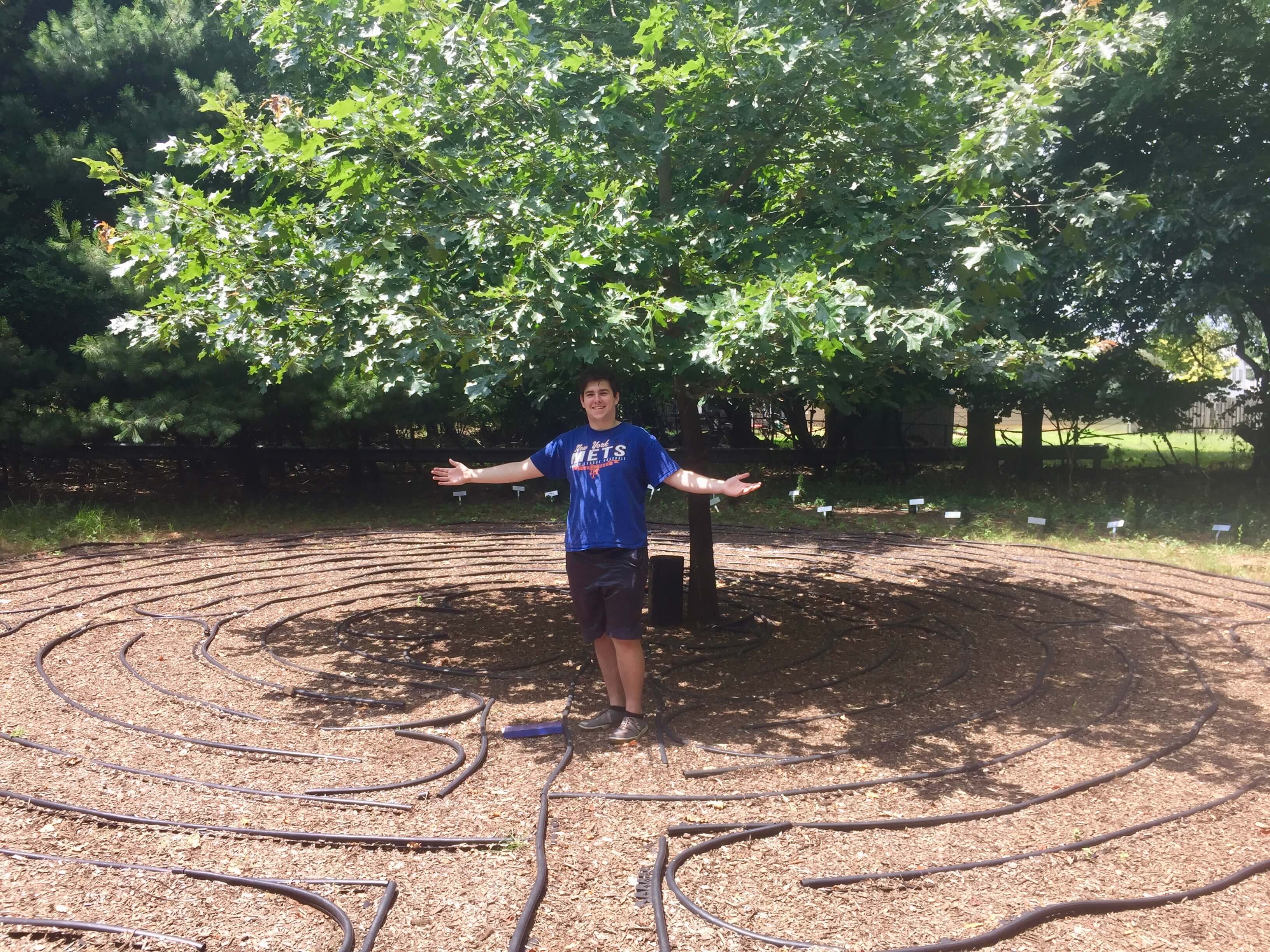The Labyrinth
Labyrinths are patterns, usually circular, drawn from principles of Sacred geometry.
Oak of Moreh Memorial Labyrinth
What is a Labyrinth?
Labyrinths are patterns, usually circular, drawn from principles of Sacred geometry. That is, their design often includes cosmic elements such as phases of the moon, the four cardinal directions, the rising and setting of the sun, changing seasons, as well as mythical and doctrinal numerology. They have been found repeated as sacred patterns around the world, passed down through the ages for more than 4,000 years in various forms.
What is the origin of labyrinths?
Labyrinths are mysterious because we do not know ancient origin of their designs or exactly how they provide a transcendent experience of connection and clarity. Almost every religious tradition around the world has made use of labyrinths. The Kaballa, or “Tree of Life”, is an elongated labyrinth design found in the Jewish mystical tradition. The Hopi medicine wheel and the “man in the maze” are two of the many Native American designs. In the Christian tradition various forms have been used, with the labyrinth understood as a reflection of life as sacred journey, as a pilgrimage toward God or wholeness, or as a pathway out of chaos towards new insight and order.
The design for the labyrinth we have here at Holy Trinity dates back to the 12th Century, when an 11-circuit labyrinth was laid with black and white stone in the floor of Chartres Cathedral. Ours is named “Oak of Moreh” because that is where Abraham first arrived in the land of Canaan while following his call from God.
What is a labyrinth for?
A labyrinth is a walking meditation. It is for people in transition, for anyone seeking healing of one sort or another, for those on a spiritual journey, for times when there is a strong felt need for such things as clarity, letting go, reconciliation, meaning/purpose, or peace. Here is space where meaning can be recovered, self knowledge deepened, comfort restored and healing can take place in a time when many people are seeking ways to integrate psychology with spirituality., the labyrinth creates a safe open space where the inner and outer self can meet, body and soul, conscious and subconscious, mind and heart.
How do you walk a labyrinth?
You walk in, following the path until you reach the center, and then you walk out again. Some like to spend quiet time at the center, others plan to keep moving. So long as you stay on the pathway you won’t get lost; it’s not that kind of maze. There is only one “way”, and winding and unpredictable as it is, it will always lead you to the center. Some people will have an intention for their walk such as a grief to ponder, a thanksgiving or an accomplishment to celebrate, or a need for a particular understanding or guidance. Others use the walk as a time for daily prayers. Some use the walk in to reflect on their life so far, the center a place of grounding in the present, and the walk out as a reflection on what may be yet to come.
Other people will walk with no expectation or goal other than a desire for clarity and peace. As in other forms of meditation, the mind or spirit should stay available to ideas or images that arise along the way. A good focus for a quiet mind is awareness of your breath, or of the ground under your feet.
Who may walk this labyrinth?
Anyone is welcome. The Oak of Moreh Memorial Labyrinth is meant by Holy Trinity to be a gift for the use of the larger community. It can be used by individuals or groups. We hope this labyrinth, a small garden space set aside on our campus, will be for people of all sorts of ages and traditions a place of welcome and blessing.
Are there rules?
There are no rules as such, but there are strong conventions that have arisen from practical and spiritual experience over time.
Entering: If you’re starting a walk at the same time as someone else, don’t enter the labyrinth together, rather wait 30 seconds to a minute to enter after the person before you begins. This avoids one person being paced or rushed by another, and also makes the walk more interesting. Groups (book groups, study groups, etc.) especially should follow this advice both walking in and walking out.
Passing: If you find yourself walking toward someone who is walking form the other direction on your path, step aside to a path alongside the one you’re both on, keep walking, then step back over to your original path once you’ve passed each other.
Walking: Always walk the path, don’t try to run it. Running can discourage other walkers (or would –be walkers), and the path edging is a serious tripping danger, especially for children.
Walking the labyrinth is a lot like life itself. Not only will it be full of unexpected turns, there may also be interruptions, stumbles, sudden noises or unplanned company along the way. So an important convention is to walk with open mind and heart, and consider the meaning of things going on around you, or of your own reactions to them.
Many people will begin or end their walk with a guiding verse or prayer, such as the one below.
Living God, send your Holy Spirit to stir my spirit. Bless the earth beneath my feet; bless this path on which I go; and bless my destination. For you are our end and our beginning. You carry us, and you go before us. You are the journey, and you are the journey’s end. Amen.

